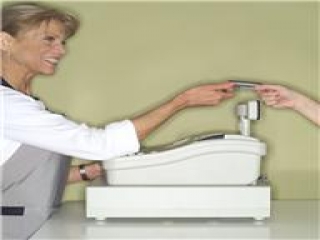 |
Proof of Cash Payments
Oct 26, 2011
As our business client, we want to share some information we received from the local IRS office regarding what they accept as verification of cash payments for goods and services that you pay to your vendors. Basically, IRS has said that in order for any cash-paid expense to be considered deductible in an audit, you must have a “receipt of payment” from the vendor. Keep in mind that a receipt of payment is not the same as an invoice, a proposal, or an estimate.
Sometimes, you only get an invoice from the vendor, especially when you pay on the spot for your purchase. If all you get is an invoice, then make sure the following items are clearly noted on it:
Have the invoice marked “paid cash” or “received cash”
Have the invoice signed by whoever received the cash
Have the invoice dated by whoever received the cash
Have the telephone number of the person/business responsible for billing issues
In other cases, some vendors in the area, especially contractors, simply give you a “proposal” or an “estimate” as your final bill for the work they perform at your location. Maybe even written on a piece of regular paper. The IRS auditor will reject this in an audit, especially when the amount exceeds a few hundred dollars. So for example, a cash ticket from the guy who re-striped the parking lot for $50-$75 may not be scrutinized as much as one for a $2500 paint job.
A proposal or estimate is not an invoice and is definitely not evidence of payment. If the vendor gives you an estimate or proposal for a final bill, ask that they give you an actual invoice and a receipt of payment. If they are reputable (and want to get paid), they will oblige. This also protects you if any warranty issues arise in the future. What if they say “this is the only bill we give our customers,” or “I’ll have to send it to you later because I only print that at my office,” etc? In that case, have the vendor follow the same steps as above (signing, dating and marking the bill, “paid cash”) BEFORE you pay them. You may want to buy your own carbonless “receipt book” if you deal a lot with cash payments to ensure your payments are documented properly.
The above applies to paying for goods and services with cash. It also applies if you write a check to “cash” or just make an ATM withdrawal. Paying with a check or credit card is enough proof of payment only if the check or charge is made to the vendor’s name. Remember to keep all bills, bank, and credit card statements for at least 3 years.
Don’t forget that no matter how you make payments, anytime you pay over $600 per year to a non-employee (person or LLC, not corporations) for services provided to your business, that vendor has to complete form W-9 and you will issue them form 1099 at the end of the year. If the vendor does not give you the W-9, you are required to withhold 28% from all payments for what is called “backup withholding tax” until they give you the completed form W-9. You have to repay that money to the IRS just like you do employee payroll taxes, so don’t forget to pay it each month.
Finally, remember that audits usually occur 1-2 years after filing. By then, vendors may have moved or closed shop. It is best to get all documentation when the work is originally done, prior to the last payment. I know sometimes you pay cash to get the best price, but don’t let a few hundred dollars of savings cost you thousands when tax time comes around. Get your proof of payment!
Category: Bookkeeping
|



